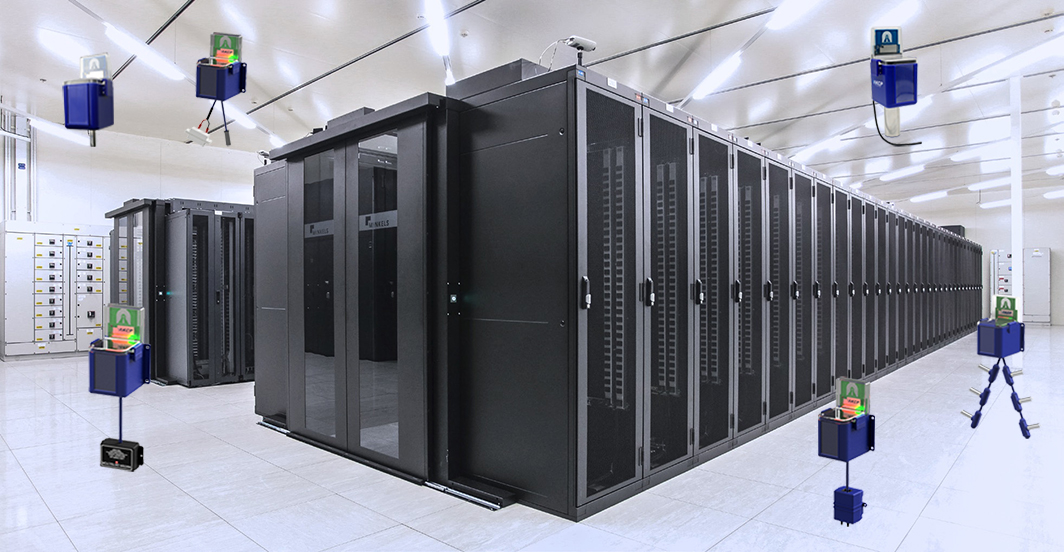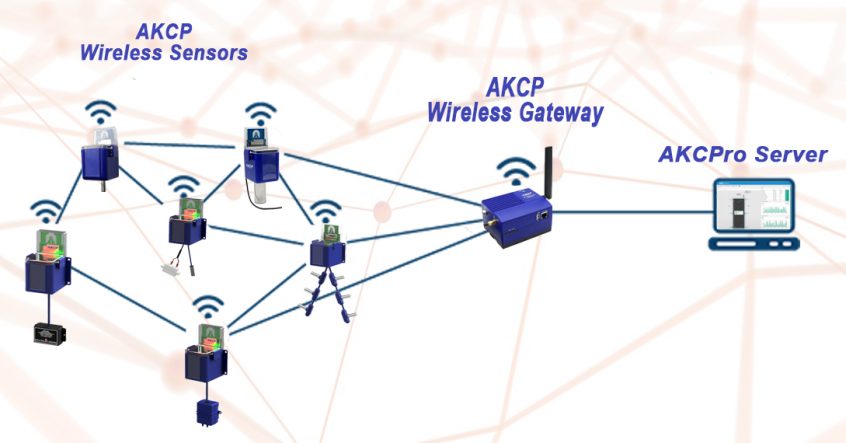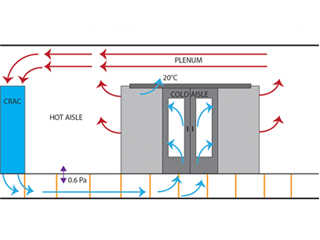Data centers often consume a lot of energy. It has more so escalated due to the rapid growth of the information technology (IT) industry. U.S. data centers consume on average 90 billion kilowatt-hours of electricity yearly. To sustain this consumption, it would need 34 coal power plants, each having a minimum capacity of 500 megawatts. Data centers account for 2% of the world’s energy consumption, with about 416 terawatts yearly. By 2040, it is predicted that data centers will be responsible for 14% of the world’s power, and 33%t of the electricity resources will end up powering data centers by 2025. 60% of the energy consumed in a data center is often wasteful due to the lack of environmental knowledge and extravagant cooling systems. Considering the massive amount of energy consumption by data centers and the amount of wasted energy, data centers may prove to be detrimental in the long run. Almost half of this energy consumption accounts for non-IT processes like humidification, fans, cooling, and lights. If these aspects are reduced, it will significantly reduce the overall consumption of data centers. To reduce the possible adverse of the increasing energy demand of data centers, a wireless sensor network can be installed. A wireless sensor network for environmental monitoring can help increase energy efficiency and optimize data center performance. A sensor network often has sensor nodes for data sensing, a router node that transmits the gathered data, and a coordinator node to obtain the data, establish the network and synthesize the data.
What is Wireless Sensor Network?
Wireless sensor networks are a network of sensor nodes that can communicate wirelessly to collect and receive information about the immediate environment. The use of wireless sensor networks will manage the energy consumption for non-IT tasks since they aid in managing the performance of various metrics.
These sensors are often designed to monitor humidity, circuit power monitors, temperature, and pressure. Information about these aspects is made available in real-time. Once the data from these sensors are gathered, they are analyzed by an integrated software product. Through this, personnel will be able to gather information regarding the status of the IT loads and determine where a malfunction is taking place. This will allow the staff to fix them immediately, which will then lessen overall energy consumption. Additionally, since it maximizes the space conditions, the power consumed per square density of space is also lessened.
Why Is There a Need for Wireless Sensor Network?
Since wireless sensor networks enable real-time decisions to be made, managing a data center becomes more efficient. This real-time capacity is due to the ability of wireless sensor devices to transmit data packets to gateway devices. The data is then transferred to the software for visual representation. It will be interpreted accordingly for the necessary operational adjustments to be made.
Previous data center technology had a lot of unnecessary energy consumption and could not provide optimum energy usage. The building automation system (BAS) is the one that controls space conditions in many data centers. Through this, information about temperature can be seen through a dashboard. However, the information might not suffice since cooling and space conditioning in data centers would entail multiple cooling units that function independently. The previous systems cannot measure the efficiency of each cooling unit. Therefore, the personnel will not know the specific energy efficiency levels of the units in their setups.
Meanwhile, wireless sensors can provide extensive information in real-time. Due to this, personnel can make the decisions needed to improve operational efficiency. These sensors collect the required data and send it via a wireless network to a gateway device. The gateway device will then transmit it to an analysis software for better comprehension and visual display. A sensor can be installed for each cooling unit or a group of units, depending on the system setup requirements.
Outlined below are some of the benefits of using a wireless sensor network:
- Visualization of cooling performance through the use of software
- Complying with humidification requirements
- Identifying hotspots
- Tuning floor-tikes
- Providing predictions for preventive maintenance
- Operational control and coordination of multiple computer room air conditioner/ computer room air handlers (CRAC/CRAH)
- Calculating Power Usage Effectiveness (PUE) in real-time
Energy Saving
Through wireless sensor network installation, energy-saving improvements can be made by adjusting the data center setpoint temperature, maximizing control and coordination of CRAC units, removing humidification systems that undergo simultaneous operations, refining server blanking and floor tile arrangements, and setting up cold-aisle or hot-aisle isolation systems. The use of wireless sensor networks can also reduce greenhouse gas emissions related to data center operation can also be reduced by 542 metric tons of CO2.
The positive results of these actions can be observed through the visualization software supplied by the wireless system manufacturer. These actions proved to increase a data center’s cooling system capacity.
Improved Efficiency
In order to optimize a cooling system, one major factor to consider is the server inlet temperature. It is vital to constantly maintain a temperature that will be suitable for the cooling system. Through sensors, the inlet temperature can be determined while making sure that the temperature remains constant. Other systems can provide a visual representation through the form of heat maps to provide further insight with regard to the temperature profile of every cooling unit. Improved efficiency of the cooling system will help the company reduce costs as well.
Flexibility
Wireless sensor networks measure cooling efficiency and can detect any parameter, including air particle count, humidity levels, temperature, debugging hotspots, electricity wattage, and liquid presence, etc. The sensor system that needs to be used depends on a company’s requirements as to the information they want to monitor and collect, system setup, and business nature. The flexibility of wireless sensor systems makes it a powerful tool for any business.
Return on Investment

Photo Credit: www.microchip.com
Wireless sensor networks provide the maximum return on investment. Since these sensors consistently monitor the different parts of data center operations, malfunctions are identified earlier. Due to this, issues can be proactively addressed before they snowball into a major problem that affects users.
Additionally, it proves to be more cost-effective. Every temperature and pressure for each operation are kept at optimal levels, which means that no unnecessary energy is being consumed. This, in turn, lessens power consumption and generates lower utility bills.
Better Capital Investment
Wear and tear are significantly reduced if servers are kept operating at optimal conditions. This means that they will be able to operate for longer periods of time. The initial investments made will last longer, and money spent on repairs or replacements will be significantly reduced. In the long run, this will generate big savings in operational costs.
Adaptable and Scalable
Wireless sensor networks are scalable and adaptable for any business type or model. Personnel has the option to reduce or add sensors anytime as per the nature and growth rate of business operations.
Wireless sensors can also be compatible with different serves and platforms. Due to this, a company will not be obligated to stick to a specific line of servers.
Determine and Resolve Malfunctions

Photo Credit: www.free-management-ebooks.com
When a certain pre-determined threshold has been breached, alerts and notifications will be sent to personnel. The necessary attention can be given to the situation before it blows up into a huge problem affecting end-users. In effect, possible downtime is prevented.
Bigger Cooling Load Reduction
Because of the information provided by a wireless sensor network, efficiency measures can be implemented that can reduce a facility’s cooling load by 48%. This reduces overall data center energy consumption by 17%, with an annual savings of 657-megawatt hours. Additionally, it also improves a data center’s PUE from around 1.83 to 1.51.
Conclusion

AKCP Wireless Sensor Network in a Data Center
The use of wireless sensor networks can be a flexible and long-term solution for data center temperature monitoring. Wireless sensor networks can collect from millions of data points that can provide reliable information in improving operational efficiency, cost-effectiveness, and energy savings. Larger installations with various gateways can use a centralized monitoring platform to collect data from all the gateways. This can be done through the AKCPro Server, a wireless tunnel server that servers as a central management platform. This can be operated in-house through a company’s own server or hosted in the cloud. It is a data center infrastructure management platform that can be integrated closely with AKCP sensors.
A reliable monitoring solution through wireless technology will effectively monitor environmental conditions, proving to be a worthy investment in the long run. AKCP has a range of wireless sensors from the cabinet temperature and humidity sensor, air pressure differential sensor, airflow sensor, water leak sensor, and more to cater to all data center needs.
For the data center, wireless monitoring inquiries, send your email to [email protected].
Reference Links:
https://www1.eere.energy.gov/femp/pdfs/wireless_sensor.pdf
https://techgenix.com/wireless-sensor-networks/
https://ieeexplore.ieee.org/document/6137036
https://www.sciencedirect.com/topics/computer-science/wireless-sensor-networks






